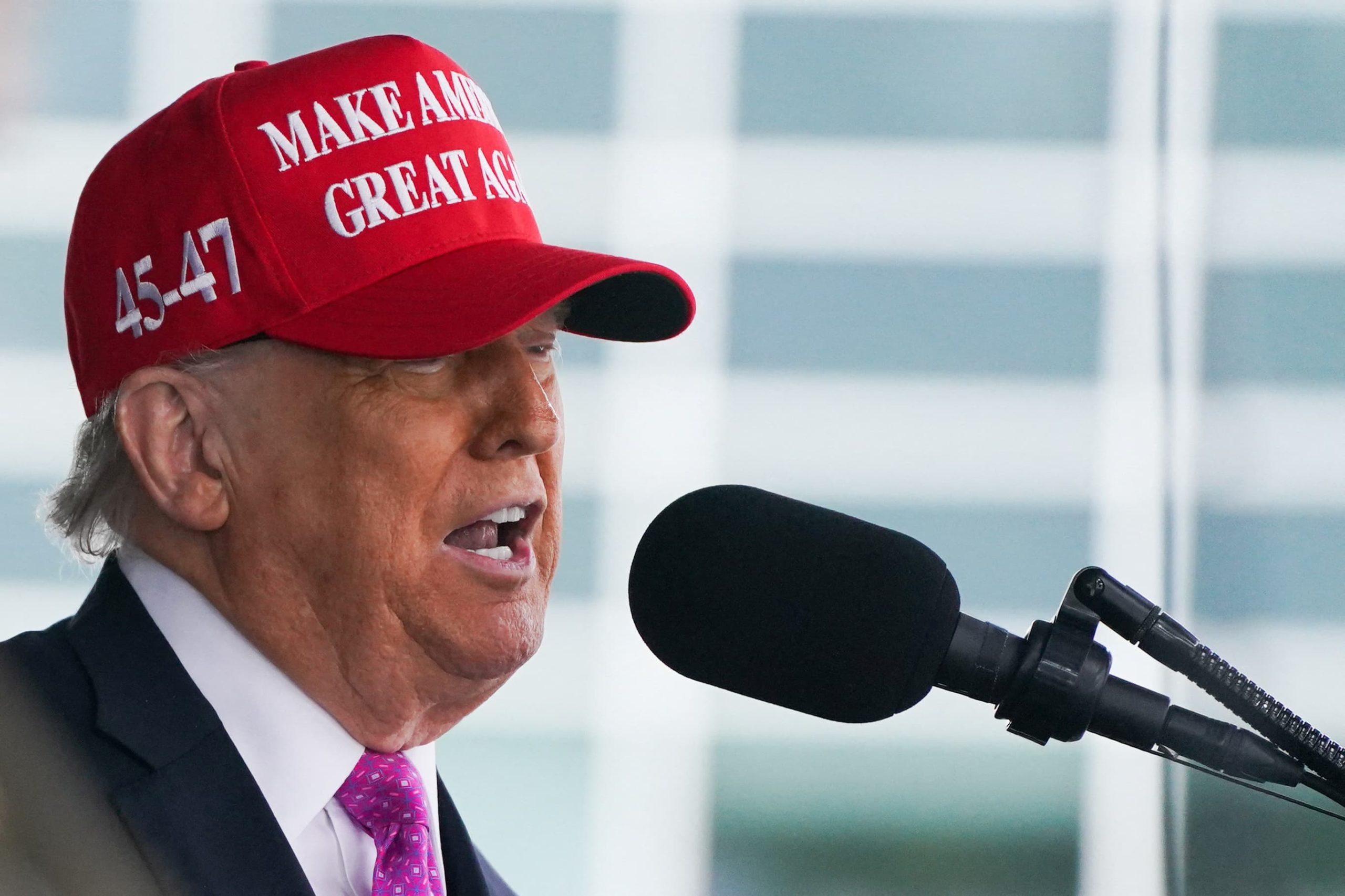Taken from CNBC’s Daily Open, our international markets newsletter — Subscribe today
If U.S. President Donald Trump follows up on his threat of 50% tariffs on the European Union, he’d be imposing higher duties on America’s ally compared with the 30% on China currently.
But on Sunday, Trump said he would delay tariffs on EU to July 9 from June 1 following a call with European Commission President Ursula von der Leyen.
Indeed, when news of the tariffs first broke, analysts weren’t convinced Trump’s statement held much weight. For one, the U.S. President used the word “recommendation” — a proposal rather than a clear directive. Trump has also walked back on more than one occasion with regard to import duties: pausing the “reciprocal” tariffs and lowering trade barriers with China, albeit both on a temporary basis.
Major U.S. and European stock indexes did not have a sharp reaction compared with Trump’s initial announcement of tariffs on April 2, signaling that investors are beginning to take tariff-related announcements with a pinch of salt.
The proposal of 50% tariff on the EU is primarily a “negotiating tactic,” Barclays wrote in a Friday note.
Still, markets dropped on the week — the S&P 500, Dow Jones Industrial Index and Nasdaq Composite lost more than 2% during that period — as Treasury yields jumped.
The sell-off in Treasurys came on the back of Trump’s tax bill, which is estimated to add $2.3 trillion to the federal deficit.
So, while investors appear to be coming to terms with Trump’s tariffs proclamations, there’s much more in the president’s arsenal to keep markets jittery.
What you need to know today
Trump recommends 50% tariffs on EU
U.S. President Donald Trump said Sunday he will delay 50% tariffs on the European Union until July 9, days after “recommending” them to kick in from June 1. Trade freight experts said that such tariffs could “backfire” on the U.S. and make manufacturing more expensive. The White House did not interpret the president’s post as a formal statement of policy, CNBC’s Eamon Javers reported.
Markets dropped — slightly
U.S. stocks dropped Friday on Trump’s tariff threats. The S&P 500Dow Jones Industrial AverageNasdaq Compositeplunges of more than 4% on April 4, after Trump announced his “reciprocal tariffs.” Similarly, Europe’s Stoxx 600fell 0.93%, milder than it did after Trump’s Liberation Day.”
Apple to pay 25% tariff: Trump
Trump said in a social media post Friday that Applepay a tariff of 25% or more for iPhones made outside the U.S. Wall Street analysts estimate that moving iPhone production to the U.S. would make the smartphone at least 25% more expensive. However, analysts said it would probably make more sense for Apple to eat the cost rather than move production stateside.
U.S. Steel and Nippon Steel merger
On Friday, Trump cleared the merger of U.S. Steel and Nippon Steel, saying in a post on Truth Social that the deal will “create at least 70,000 jobs, and add $14 Billion Dollars to the U.S. Economy.” Former U.S. President Joe Biden blocked Nippon Steel from purchasing U.S. Steel for $14.9 billion in January, citing national security concerns. Shares of U.S. Steel surged 21.2% on the news.
[PRO] Nvidia earnings to determine markets
Nvidiadetermine investor sentiment of markets for the week. Keep an eye out also for the U.S. personal consumption expenditure index for April for signs of how tariffs are affecting the prices households pay for goods and services.
And finally…
Companies turn to AI to navigate Trump tariff turbulence
Several tech firms told CNBC say they’re deploying artificial intelligence to visualize businesses’ global supply chains — from the materials that are used to form products, to where those goods are being shipped from — and understand how they’re affected by Trump’s reciprocal tariffs.
Last week, Salesforceimport specialist AI agent that can “instantly process changes for all 20,000 product categories in the U.S. customs system and then take action on them” as needed, to help navigate changes to tariff systems.
Uncertainty from the U.S. tariff measures “actually probably presents AI’s moment to shine,” Zack Kass, a futurist and former head of OpenAI’s go-to-market strategy, told CNBC’s Silvia Amaro at the Ambrosetti Forum in Italy last month.
International: Top News And Analysis
Read the full article <a href="Read More” target=”_blank”>here.



